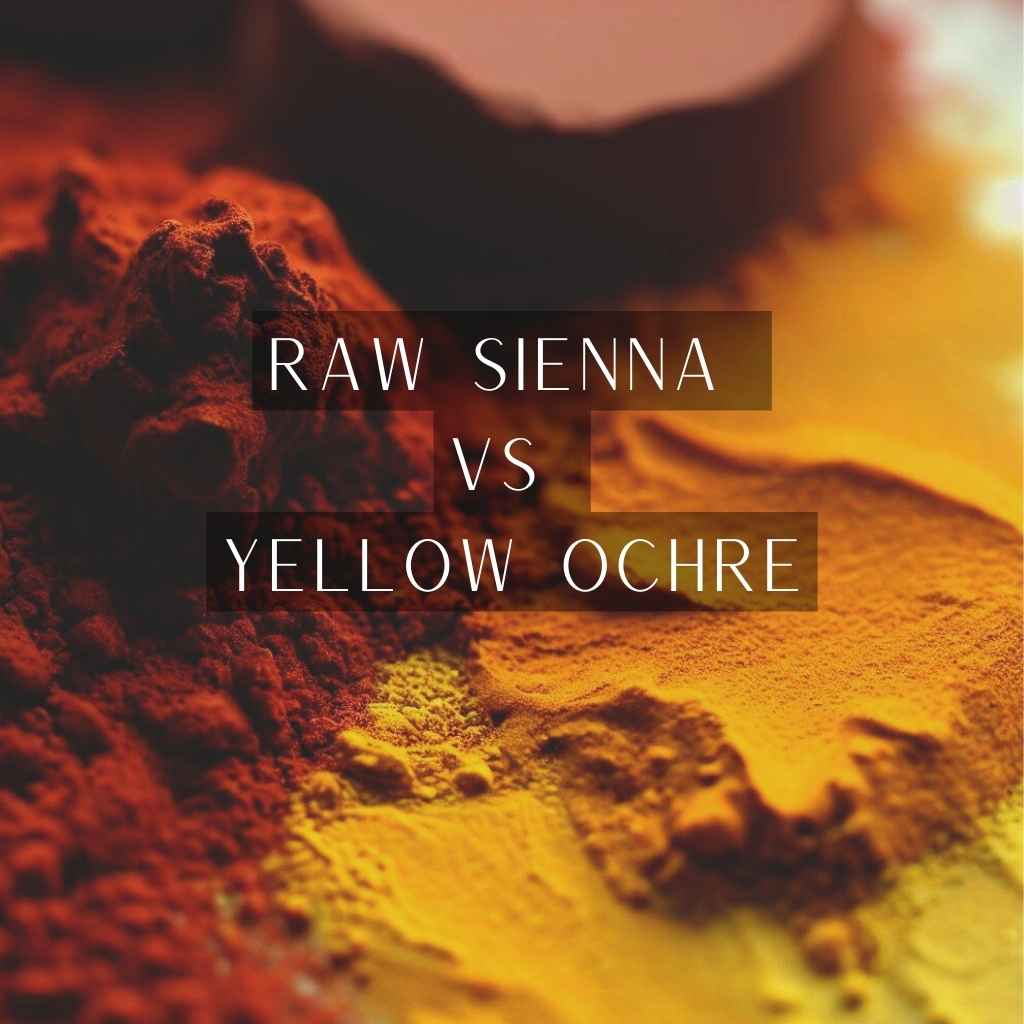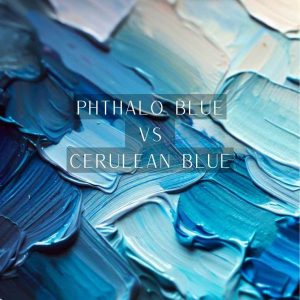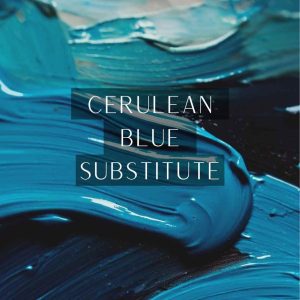Are you an artist trying to understand the differences in hues and possibilities between the earthy tones? Look no further, as we dive into the captivating world of raw sienna vs yellow ochre.
Among the vast array of colors available to artists, raw sienna and yellow ochre hold a special place. These earthy pigments have been used for centuries and continue to captivate artists with their unique properties and versatility.
In this article, we will delve into the nuances of raw sienna and yellow ochre, exploring their origins, characteristics, applications, and more.
What is Raw Sienna?
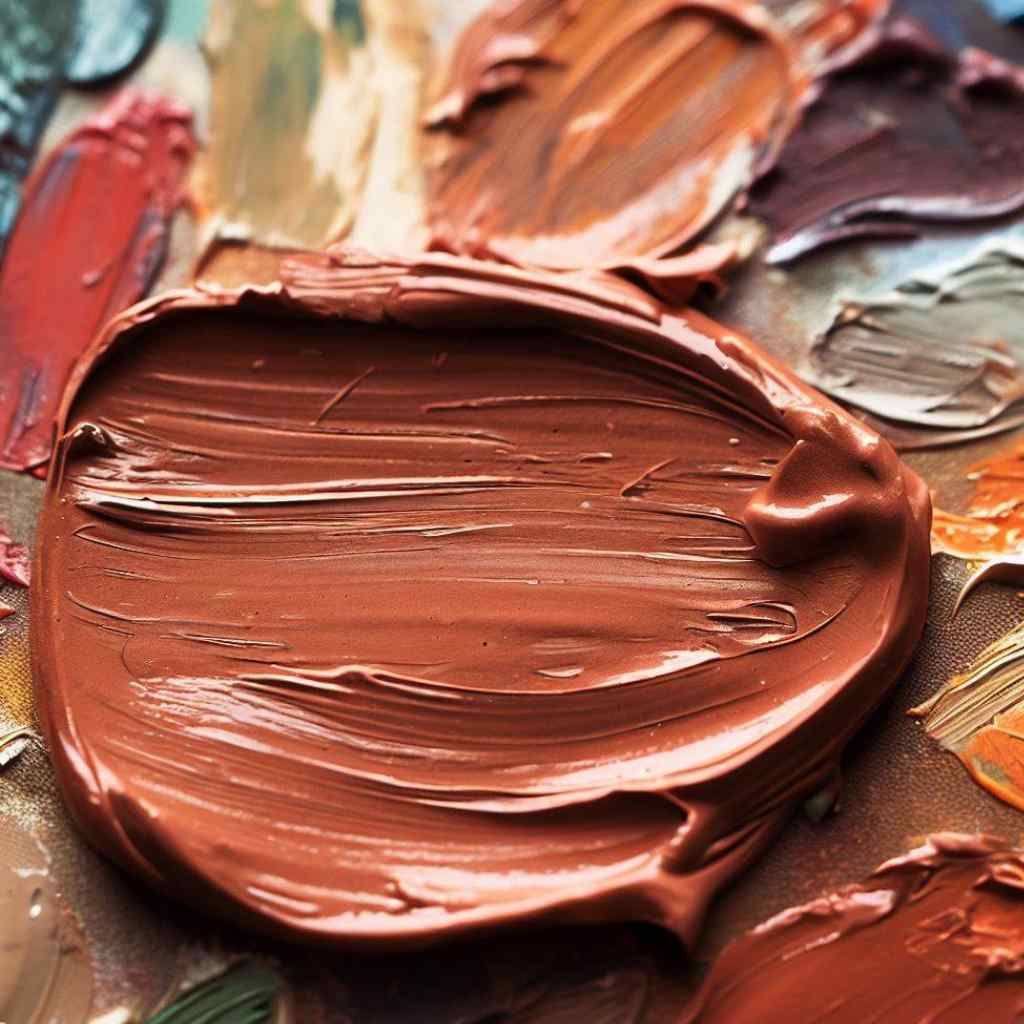
Raw sienna, derived from natural earth deposits, is a warm, yellow-brown pigment that embodies the essence of earthy tones. With its medium to high opacity, raw sienna exhibits excellent lightfastness and provides artists with a range of possibilities.
Raw sienna is renowned for its warm and earthy hue, evoking images of sun-soaked terracotta and rich clay. The color composition of raw sienna consists of a harmonious blend of orange and brown undertones.
Iron oxide, specifically the presence of hematite and goethite, is responsible for the reddish-brown hues observed in raw sienna.
The natural sources of raw sienna
It has a fascinating origin rooted in the Siena region of Italy. The pigment’s name itself reflects its association with this historic location. The clay-rich soil found in the Siena region holds abundant deposits of iron oxide, which gives raw sienna its distinct color.
Various regions around the world are known for their deposits of raw sienna, providing alternative sources for this valuable pigment.
For instance, Cyprus boasts significant raw sienna reserves, offering artists a distinct variant of this earth pigment. India and the United States are also recognized for their raw sienna deposits, contributing to the availability and diversity of this color.
What is Yellow Ochre?
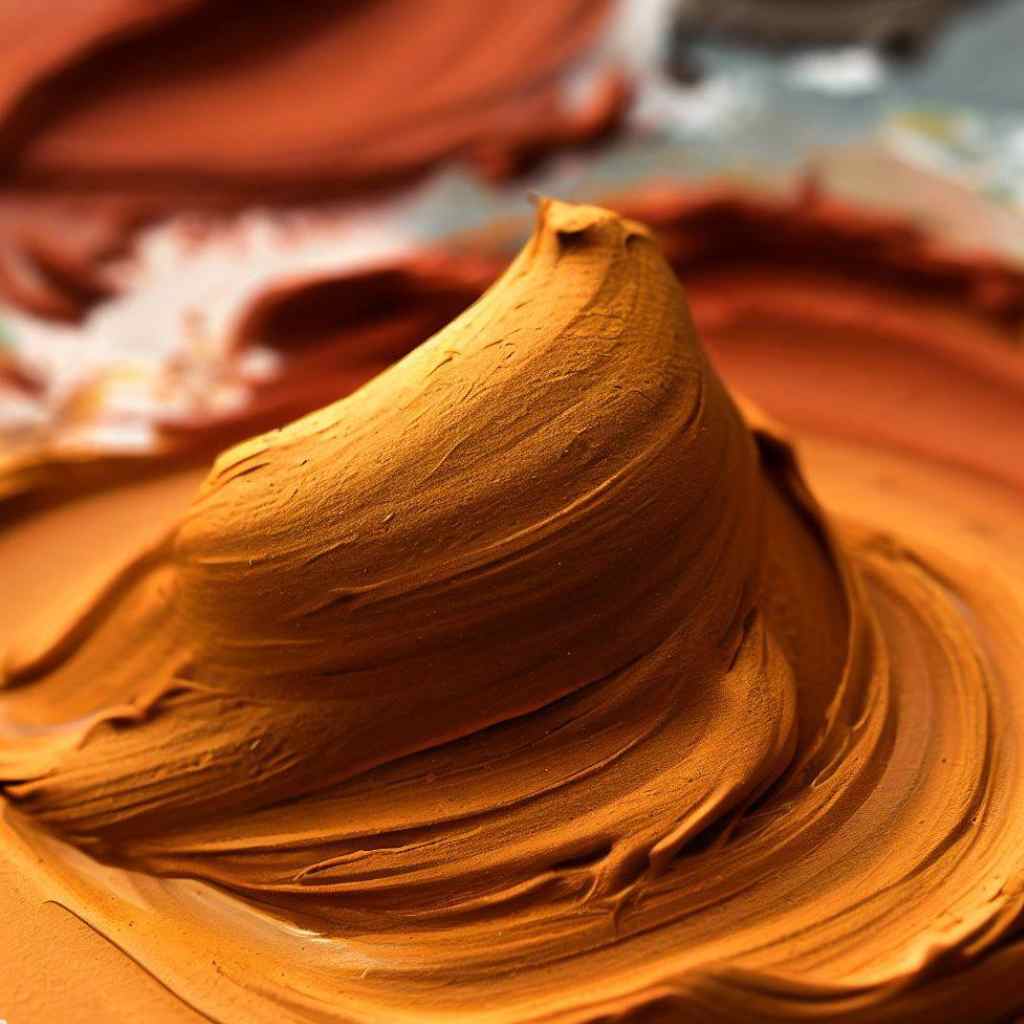
Similar to raw sienna, yellow ochre is also a naturally occurring pigment. Like raw sienna, owes its coloration to iron oxide, but with variations in composition and iron oxide content. It features a vibrant yellow hue with subtle undertones of brown, lending it a unique charm.
The Origins of yellow ochre
Dating back to prehistoric times. Ancient cave paintings, such as those found in Lascaux, France, and Altamira, Spain, bear testament to the use of yellow ochre by early humans. These vivid and evocative artworks reveal the enduring appeal of yellow ochre as a natural pigment.
Across different cultures, yellow ochre held symbolic value, representing life, warmth, and spirituality. Its association with the sun and its golden hues made it a powerful symbol of enlightenment and vitality.
Raw Sienna and Yellow Ochre: Compatibility and Mixing Potential
The color characteristics and mixing potential of raw sienna and yellow ochre offer artists a vast array of creative opportunities.
Raw sienna’s unique color qualities
Raw sienna’s warm and earthy tones evoke the essence of natural landscapes, capturing the hues of sun-drenched fields and clay-rich terrains. With its rich reddish-brown undertones, raw sienna brings warmth, depth, and a sense of groundedness to artworks.
One of the remarkable features of raw sienna is its blending capabilities with other colors. When mixed with other pigments, it seamlessly integrates, allowing artists to achieve a wide range of hues and shades.

As the pigment mixes with water or other mediums, the granules disperse, creating interesting patterns and a tactile quality on the surface. This textured effect enhances the visual interest of paintings, particularly in depictions of natural landscapes and organic subjects.
Blending raw sienna with blues, greens, or even warmer tones creates nuanced earthy shades and natural-looking greens. This versatility in blending enables artists to add complexity and subtlety to their artwork, providing depth and realism.
The versatility of yellow ochre
Yellow ochre offers artists remarkable versatility in terms of color range and blending possibilities. From pale, delicate yellows to deep, golden hues, yellow ochre spans a broad spectrum of tones.
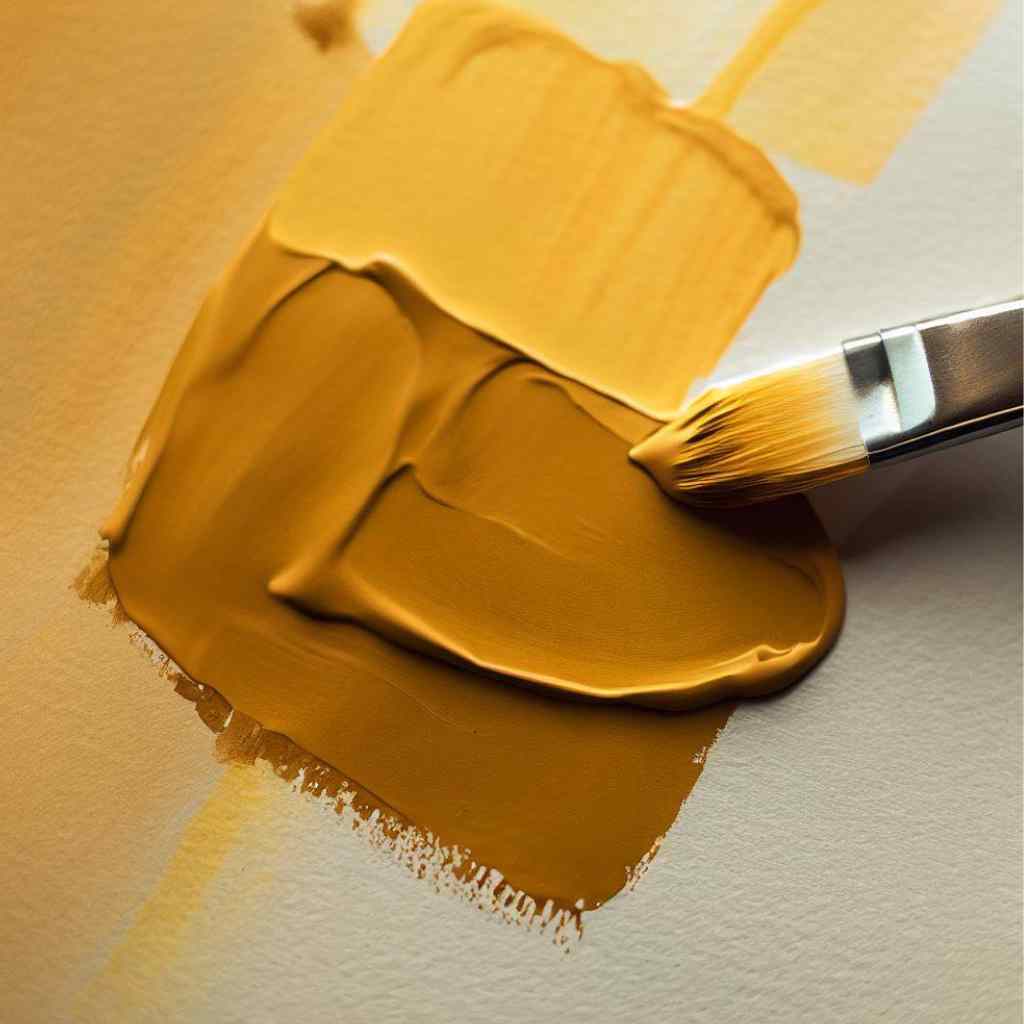
In addition to its range of yellows, yellow ochre harmoniously blends with other colors across various palettes. Whether paired with warm earth tones or contrasting with cool blues, yellow ochre has the ability to create harmonious blends and captivating color combinations.
This versatility opens up a world of possibilities, allowing artists to express a wide range of emotions and evoke different atmospheres in their work.
Raw Sienna vs Yellow Ochre: Applications in Painting and Art
The diverse applications of raw sienna and yellow ochre in painting and art offer artists the flexibility to explore various subject matters, styles, and moods.
Raw sienna in traditional and contemporary art
Raw sienna finds extensive application in both traditional and contemporary art forms, offering artists a range of possibilities to explore.
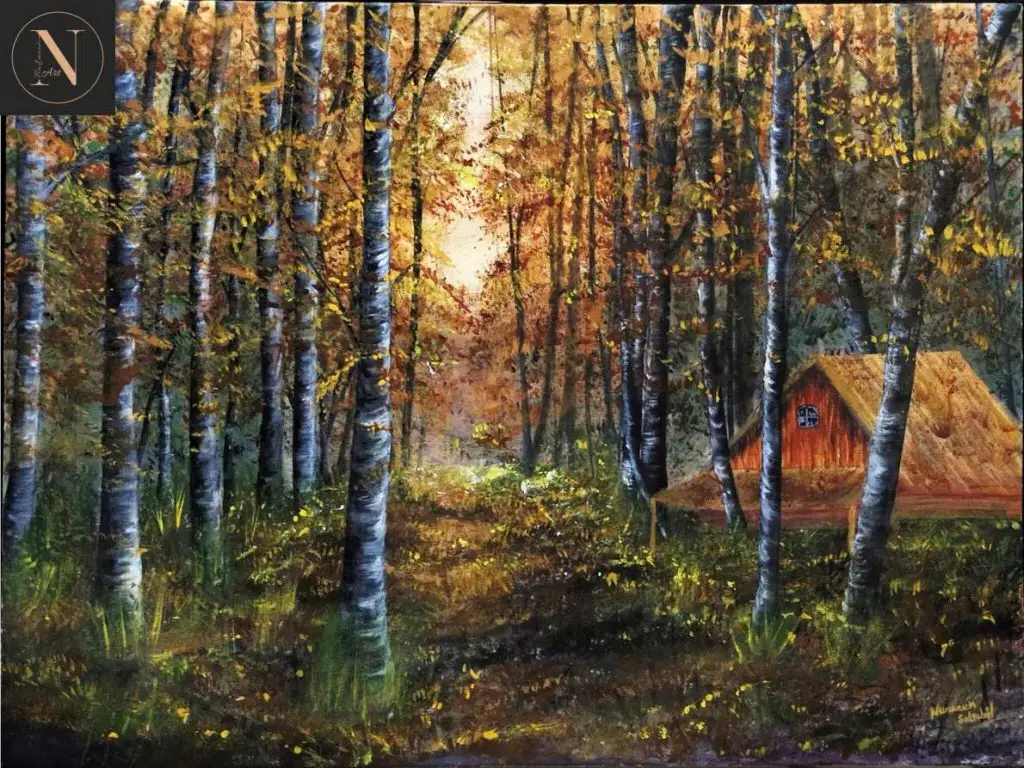
In landscape painting, raw sienna’s warm and earthy tones make it an ideal choice for depicting natural landscapes. Its rich reddish-brown undertones beautifully capture the essence of sunlit fields, rolling hills, and earthy terrains. Artists can utilize raw sienna to create a sense of depth, warmth, and realism in their landscape compositions.
When it comes to portrait painting, raw sienna plays a vital role in creating realistic skin tones and textures.
The subtle warmth and earthiness of this pigment lend a lifelike quality to portraits, allowing artists to capture the nuances of human flesh with authenticity and depth. It helps in achieving natural-looking shadows, warm undertones, and a sense of vitality in portraiture.
The diverse applications of yellow ochre
Yellow ochre’s versatility makes it suitable for a wide range of subjects and art styles, making it a valuable addition to an artist’s palette.
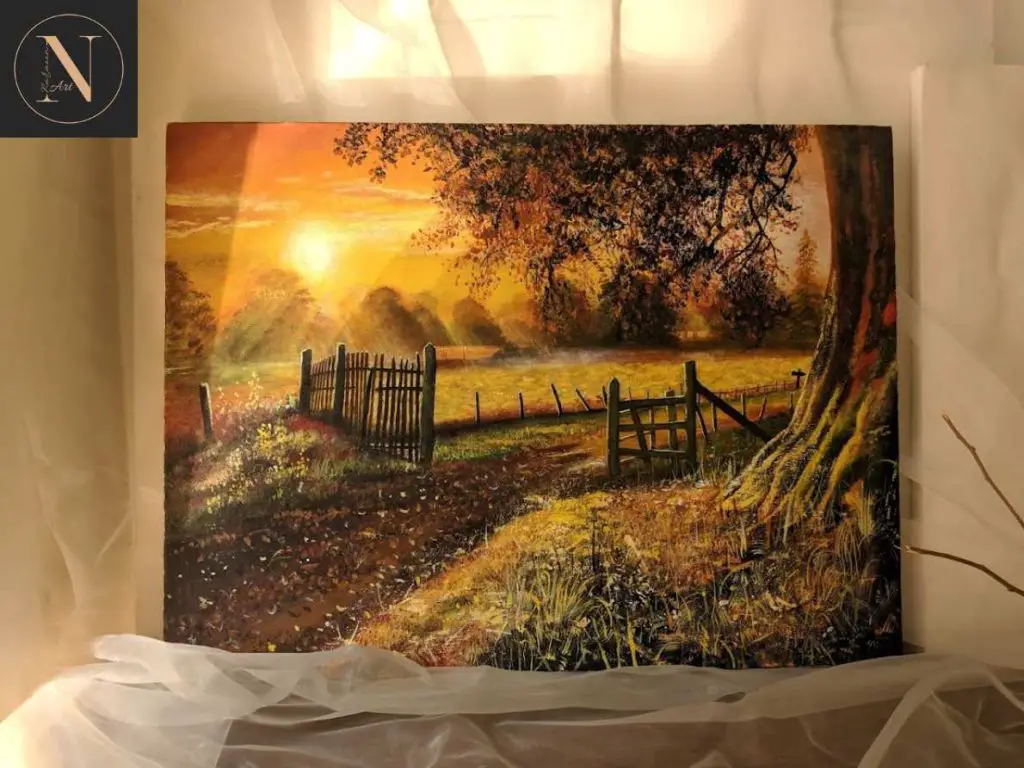
In landscape art, yellow ochre shines in capturing the warmth and radiance of sunlight. Its vibrant yellow hues bring life to sunlit meadows, golden sunsets, and glowing foliage. Artists can utilize yellow ochre to convey a sense of warmth, energy, and the play of light in their landscape compositions.
Yellow ochre’s applications extend beyond landscapes. In still life painting, it adds a touch of vibrancy and luminosity to objects, particularly those bathed in warm light.
Its versatility enables artists to depict a range of materials, from golden fruits to sunlit ceramics, infusing the artwork with a sense of vitality and visual interest.
Additionally, yellow ochre finds its place in abstract art, where its warm and vibrant qualities can be used to evoke emotions and create dynamic compositions. It can be employed to add bursts of energy, create focal points, or evoke a sense of light and atmosphere in abstract works.
Techniques and Tips
Here are a few techniques and tips for raw sienna and yellow ochre to apply them in a better way-
Raw Sienna
To fully explore the potential of raw sienna, artists can employ various brush techniques and application methods-
- Dry brushing can create textured effects, enhancing the natural appearance of landscapes or aged surfaces.
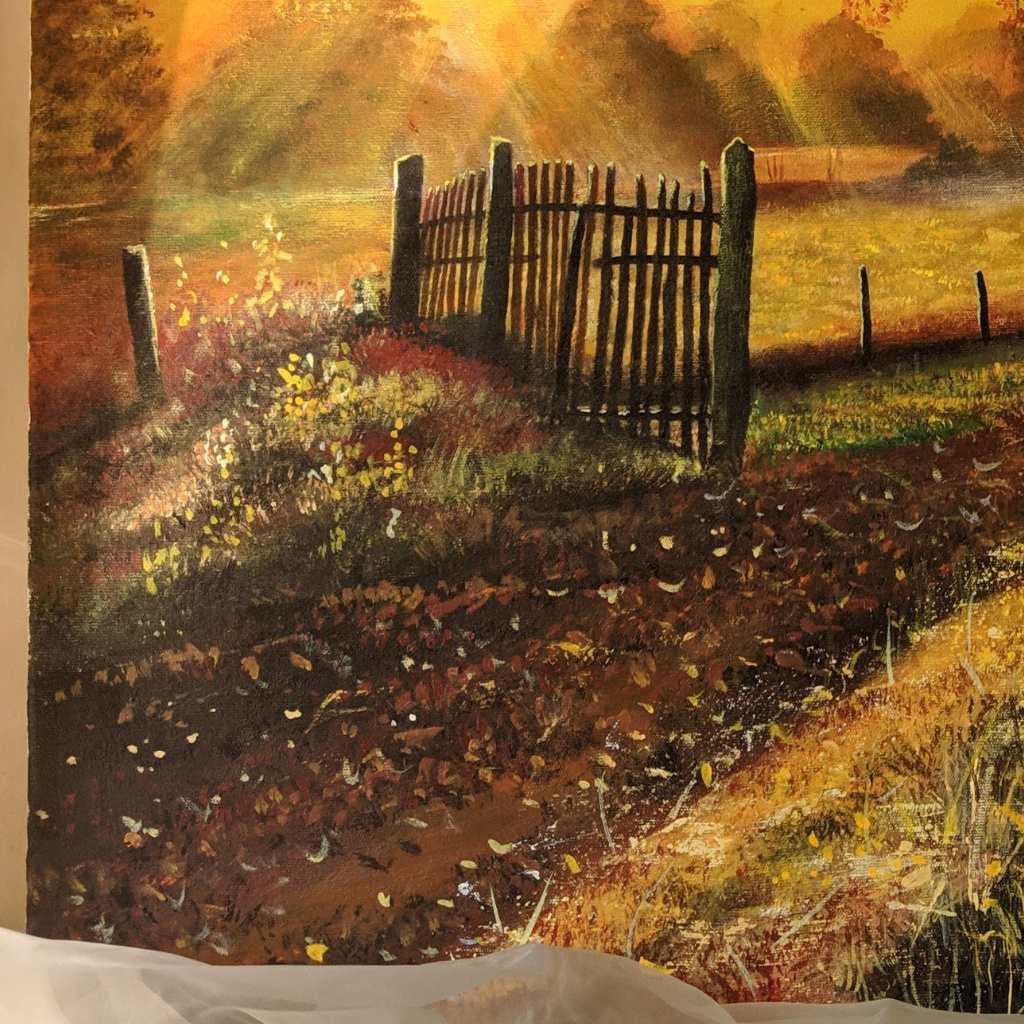
- Layering raw sienna with glazes can add depth and richness to the colors above it, resulting in a luminous quality.
- Applying raw sienna with different brush sizes and strokes allows artists to create intricate details or broad, sweeping gestures, adding visual interest and dimension to their artwork.
Yellow Ochre:
When working with yellow ochre, artists can experiment with different brush techniques and application methods to achieve desired effects-
- Dry brushing can be used to create texture and convey the delicate play of light on surfaces.
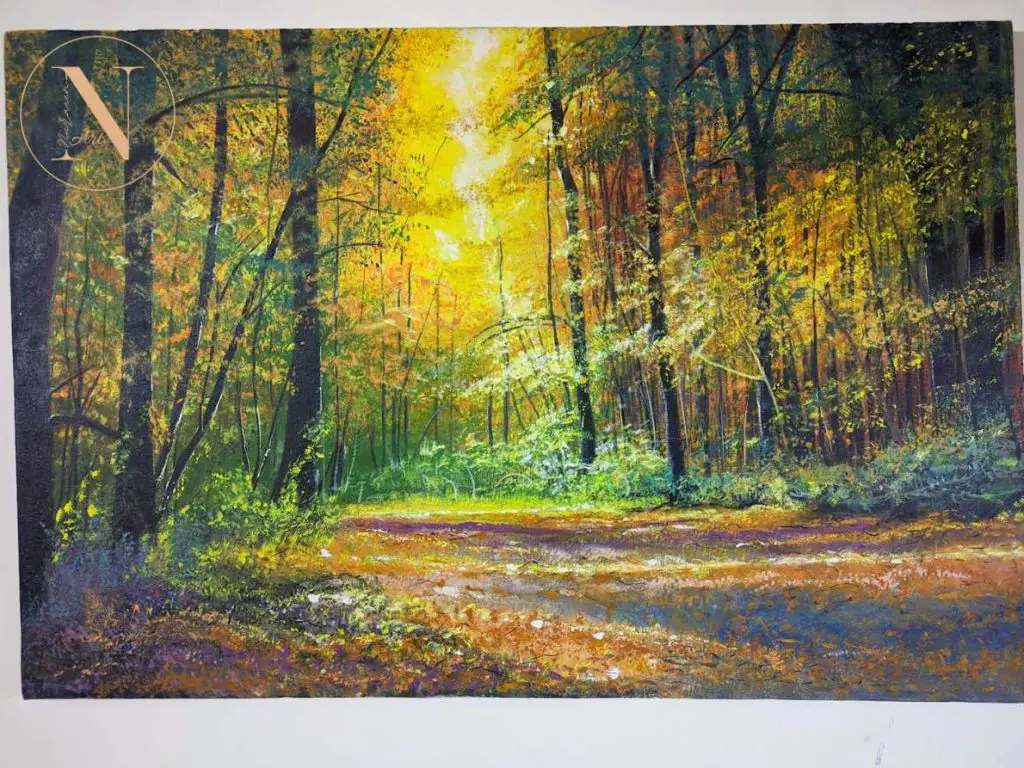
- Layering yellow ochre with translucent glazes can produce a glowing, sun-kissed effect.
- Artists can also explore using different brush sizes and strokes to create varying degrees of detail and movement within their compositions.
Cultural Significance and Symbolism
The cultural significance and symbolism associated with raw sienna and yellow ochre enrich their role in artistic expression-
Raw Sienna in Cultural and Historical Contexts
Raw sienna holds cultural and historical significance, with its usage deeply intertwined with indigenous art and rituals across different cultures.
In indigenous art, raw sienna has been used for generations, often symbolizing a connection to the earth and ancestral heritage. It serves as a conduit for expressing cultural identity, spirituality, and a deep reverence for the natural world.
The warm and earthy tones of raw sienna embody a sense of grounding and stability, reflecting the harmony between humans and the environment in indigenous cultures.
Furthermore, raw sienna’s association with earth and stability makes it a symbol of resilience and rootedness in many cultural contexts. It represents a connection to the land, embodying the strength and endurance found in nature.
Artists incorporate raw sienna into their works to evoke a sense of grounding, permanence, and a deep appreciation for the natural world.
The Symbolism of Yellow Ochre across Cultures
Yellow ochre carries symbolic meanings that resonate across cultures, representing various spiritual and sacred concepts.
In many spiritual traditions, yellow ochre is associated with enlightenment, symbolizing the illumination of the mind and the attainment of higher consciousness.
The radiant and warm qualities of yellow ochre are seen as representations of spiritual growth, wisdom, and the journey toward enlightenment.
Yellow ochre also symbolizes joy and vitality, capturing the essence of sunlight and the energy of life itself. Its vibrant and uplifting nature evokes feelings of happiness, positivity, and celebration.
Artists use yellow ochre to infuse their works with a sense of joy, optimism, and zest for life.
Moreover, yellow ochre’s spiritual and sacred meanings extend to its use in ceremonial rituals, where it represents purification, blessings, and connection to divine forces.
It is often employed in traditional ceremonies and rituals to invoke positive energies, ward off negative influences, and bring harmony and balance to individuals and communities.
Wrapping Up
As we come to the end of our journey on raw sienna vs yellow ochre, these are two exceptional pigments that have played a significant role in the art world throughout history.
Their distinct color properties, mixing capabilities, and versatile applications make them invaluable assets for artists across different mediums and styles. Whether used individually or in combination with other colors, raw sienna and yellow ochre possess a timeless charm that continues to captivate artists and evoke emotions.
By embracing the unique qualities of these pigments, artists can expand their creative horizons and create artwork that resonates with viewers on a profound level.
So, grab your brushes, explore the nuances of raw sienna and yellow ochre, and let your artistic journey unfold with vibrant and earthy tones.

